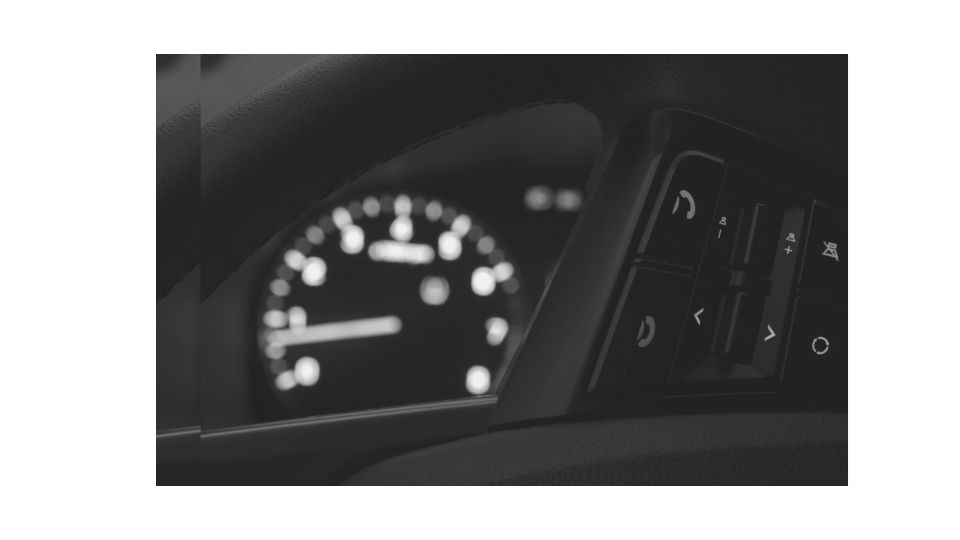The Forward Collision Warning(FCW) system prevents frontal accidents. The Honda Odyssey’s sensor is placed in the rearview mirror to monitor and warn the driver of a possible collision. The sensors have wide varieties, such as laser, radar, and cameras. Honda Odyssey uses the camera.
This classic system comes with a couple of cool features including:
FCW System Features
FCW indicates “brake” on the dashboard, signals an audible beep or the steering wheel might start vibrating if there is peril. The driver can then use emergency brakes to avoid possible collisions. The vehicle can also automatically stop, though rare.
FCW uses distance and speed to calculate the impending danger between the driver and their surrounding objects. If the focal objects are too close, FCW alerts the driver.
The system works 24/7. It senses objects that are a maximum of 500 feet ahead. However, those driving at 3 MPH and below do not get warnings.
Can One Drive with the FCW Off?
One can set the system in a short, long, or normal range. One can deactivate the warning if one is in a crowded area and the driver is driving past 10 MPH. However, a driver should only deactivate the FCW when necessary. Putting the FCW off means the system does not alert the driver of an impending collision.
How to Turn off the Sensor System in Honda Odyssey
Turning off the sensors can be done in two main ways:
Step 1
One should long press the steering wheel button.
There will be a sound which indicates that the FCW has been turned off.
Step 2
One can also turn FWC off by:
- Clicking on the setting button on the dashboard
- Then hit on the “vehicle” setting
- Scroll down to “all” or “driver assistant system”
- Click on “forward collision warning distance”
- Choose “off”
- And click back to the exit
What Causes a Failure in the FCW System?
A malfunction with the FCW is caused by a range of factors, including:
- Wear and tear
Regularly service the vehicle to maintain its parts. Servicing also detects minor faults and fixes them before they escalate. Additionally, outdated software may be a contributory factor.
- Faulty sensors
Faulty sensors may not detect an imminent collision. If there is an accident, one should ensure that the sensors are working correctly. Ideally, this should be done by qualified personnel.
- Dirt
The cameras may be obscured by dirt, leading to minimum or zero environment recording.
- Harsh weather
Inclement weather, either too high or too low, may interfere with the system. Therefore, the system indicates a failure even when there is no failure. In effect, the driver should halt the car when it’s safe and switch off the engine. After about half an hour, the problem should be solved.
However, the dashboard may still be indicating “FCW system failure.” One should therefore take their car to their dealer if they have a warranty.
- Faulty operators
Such include the ABS modulator and the VSA module, One should therefore replace the operators or update their software.
How to Reset the FCW
After replacing the windshield, one should adjust their camera to remove the error message.
One can opt for a static or dynamic, aiming to get back online after replacing the windscreen. A
Honda dealer should perform static aiming. The dealer turns off the light, works in a place free from direct light, and applies the brakes. One can fix this in two main ways.
- The driver can reset the system with the Honda diagnostic scanner.
- If one lacks a scanner, one can unplug the batteries for about 30 minutes. However, one should update information such as time after replugging the batteries because the information will be faulty.
Tips When Using FCW System Detector
There are several tips you can employ to get the most out of the FCW system, including:
- Always be cautious when driving
FCW supplements the driving experience, but shouldn’t be a substitute for caution. Therefore, one should not drive under the influence of alcohol and drugs or when on the phone.
- Keep the area around the camera clean
One should regularly wipe off snow, ice, or anything that can obscure the cameras.
Snow, mud, ice or scorching heat may interfere with the FCW system to detect objects, rendering them ineffective.
Conclusion
The Honda manual indicates that extreme temperatures such as snow, ice and heat can interfere with the efficiency of the sensors. The sensors, therefore, give false signals. One should turn off their engines or unplug their batteries for a while. If the dashboard still indicates “FCW system failure”, one should inspect the sensors, which might be faulty because of outdated software, or damaged sensors, among other reasons.

Robert Anderson is a world class motorhead who rebuilt his first carb at age 10, his first engine at age 15, and completed his first full hotrod build when he was just 18! Previously, he has ran a part warehouse, delivered pizzas, and managed the service department for a $20 million/year revenue dealership. Robert knows cars like few others and he is passionate about sharing his knowledge.

